Flying Carpets
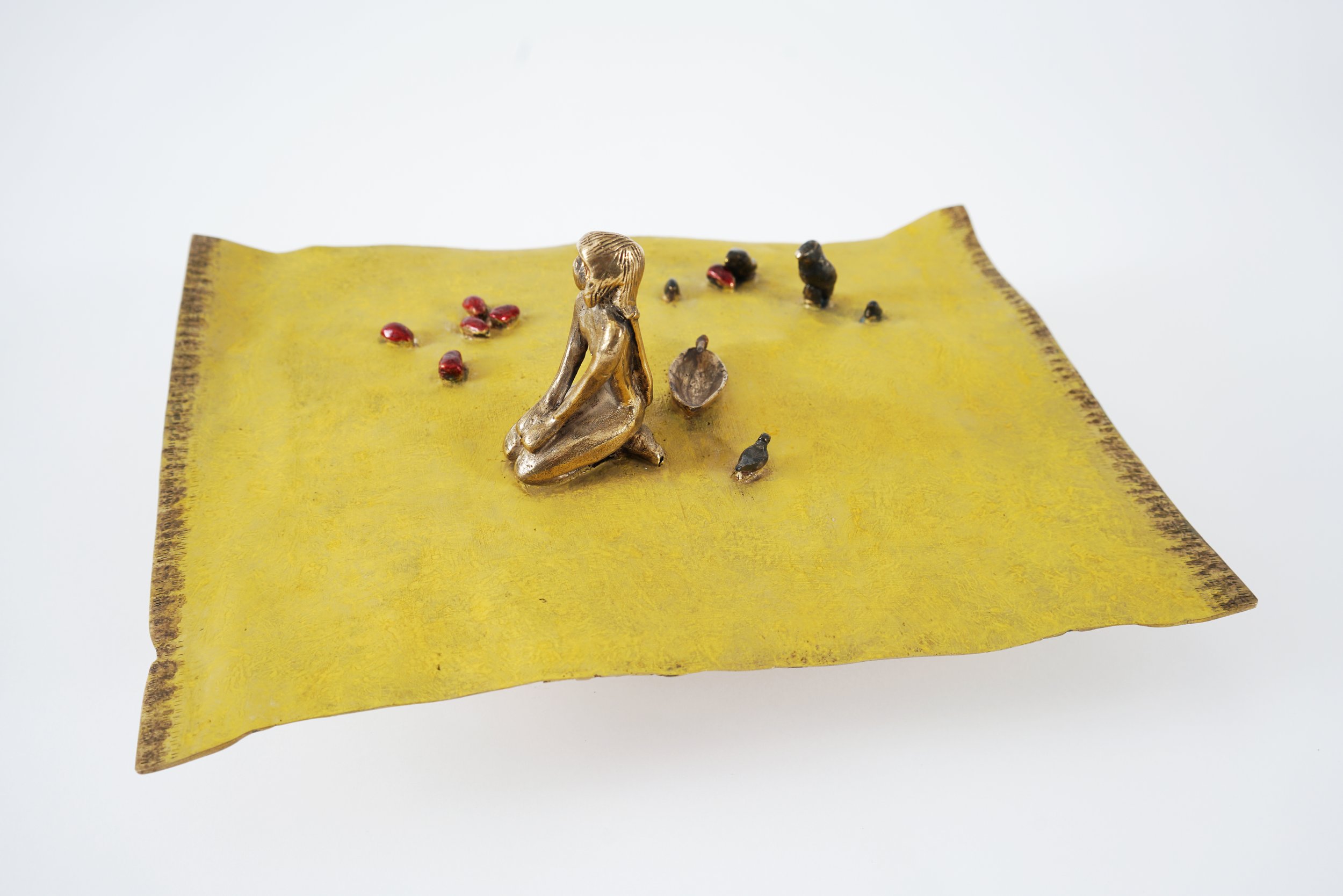
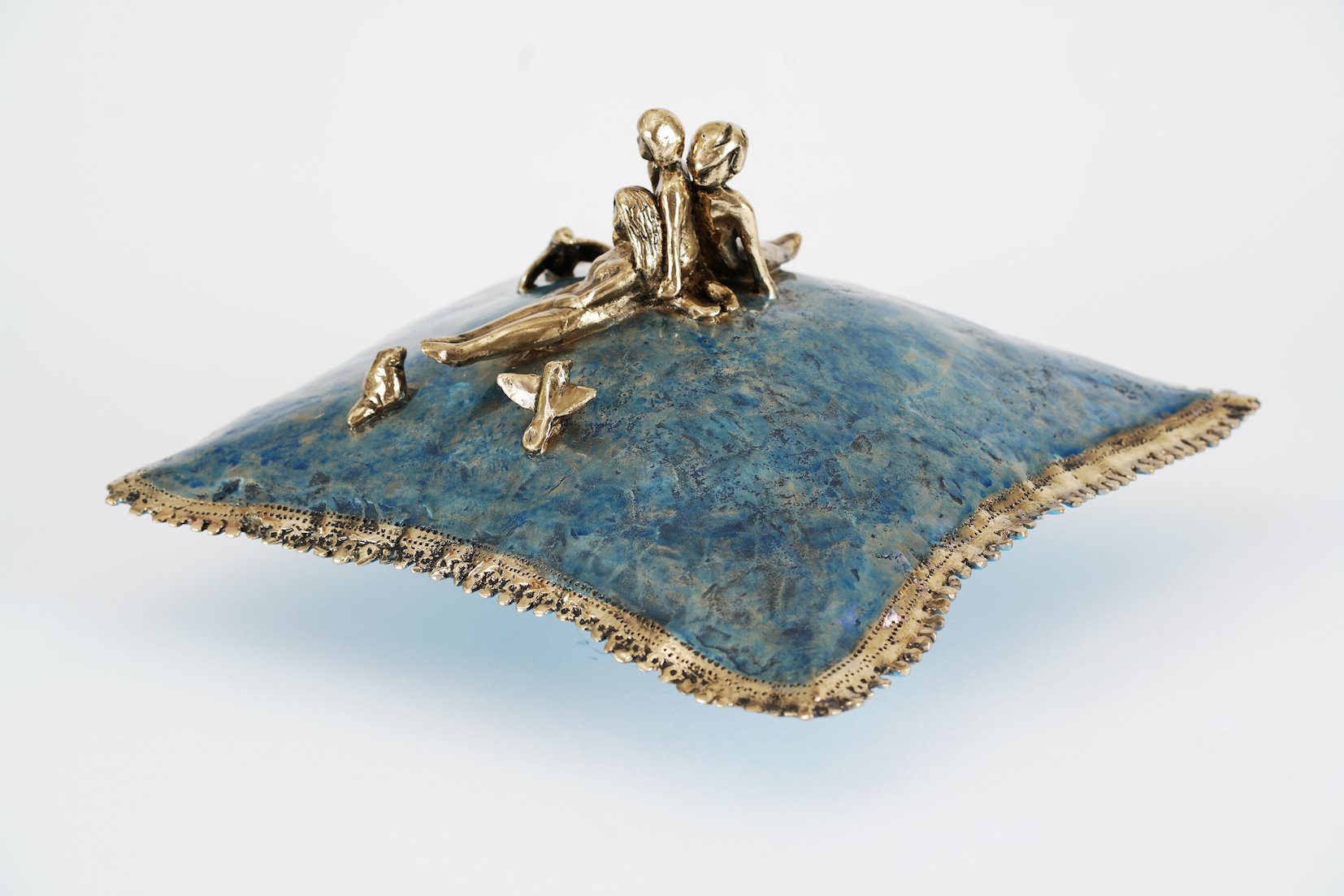
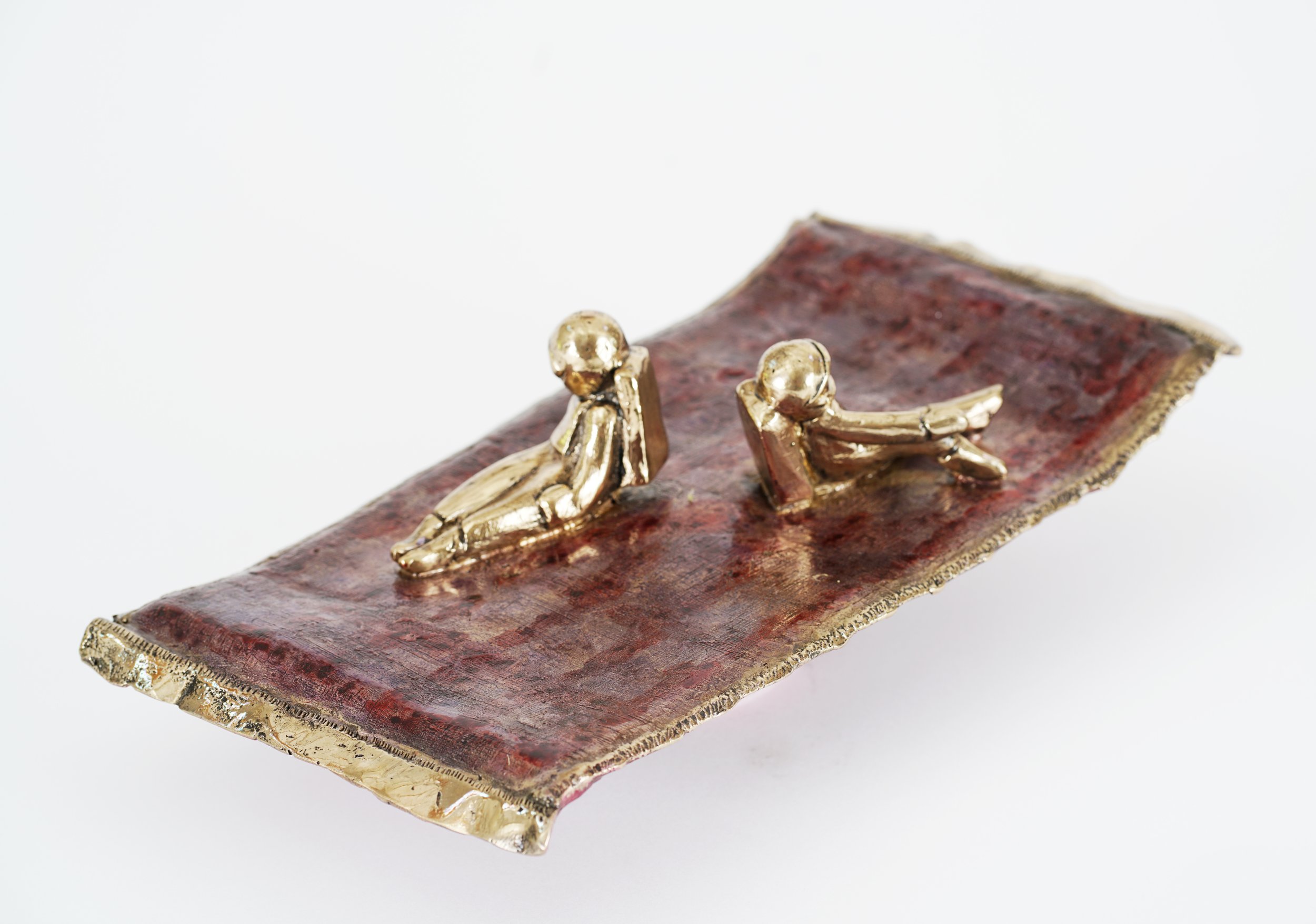

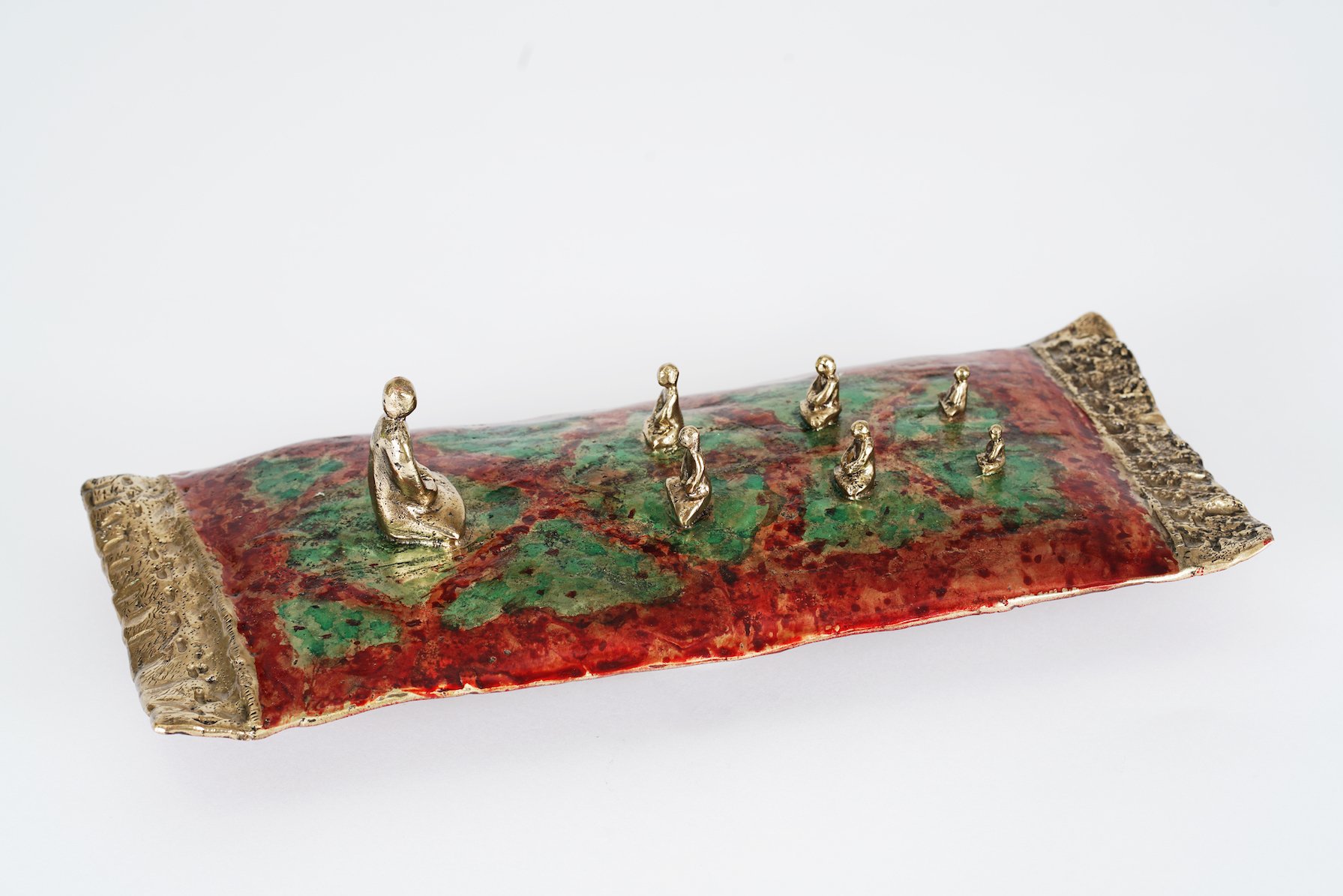
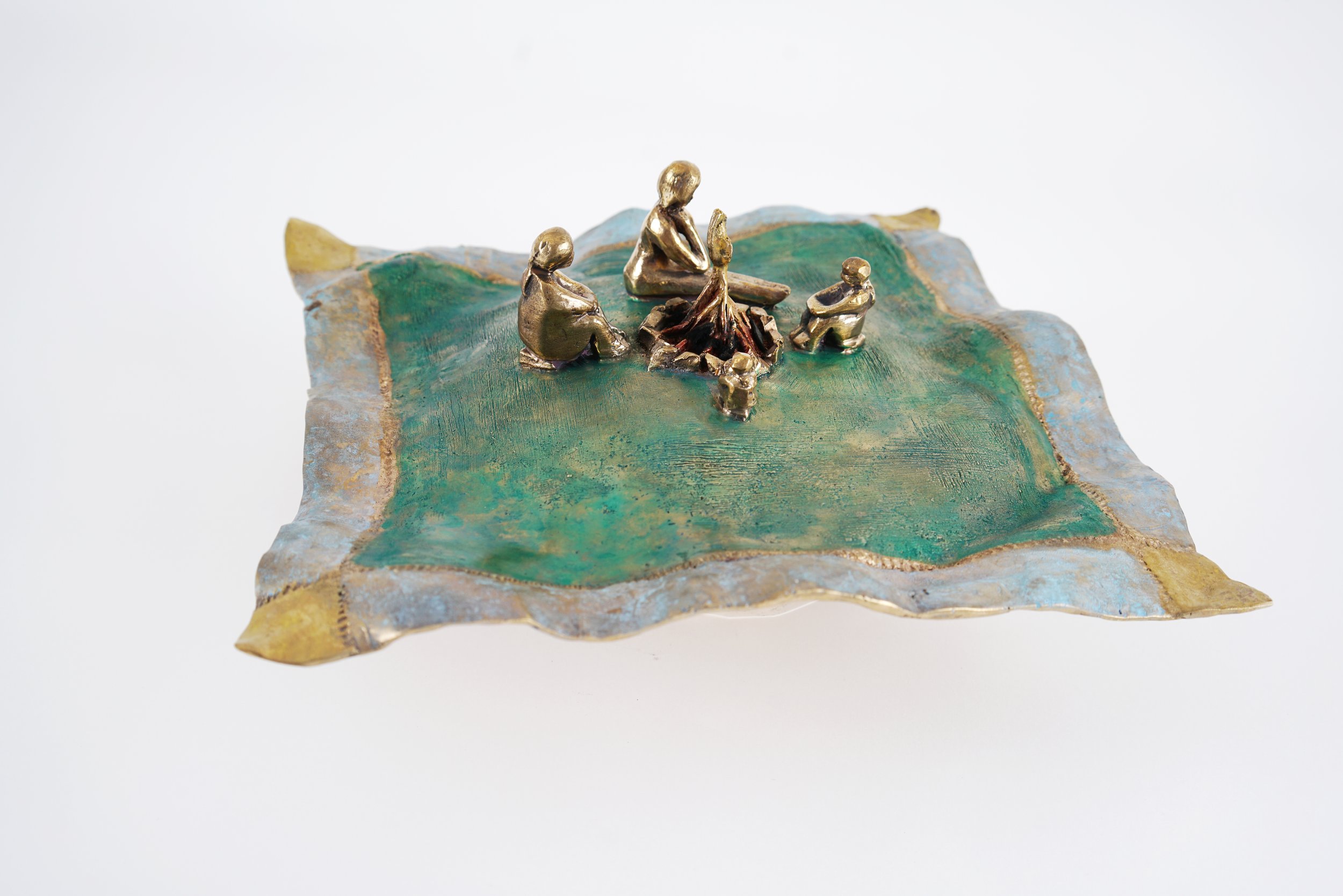
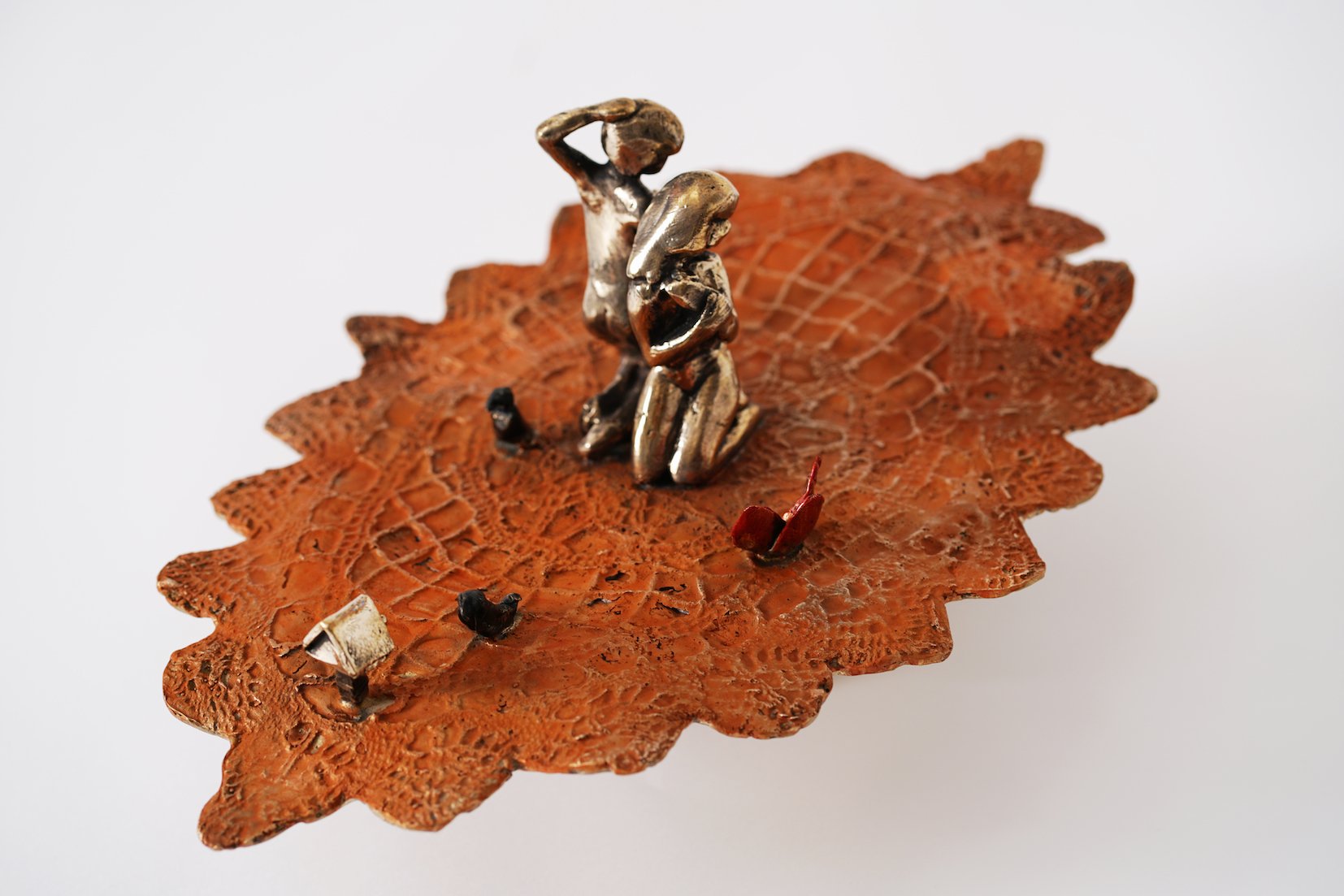
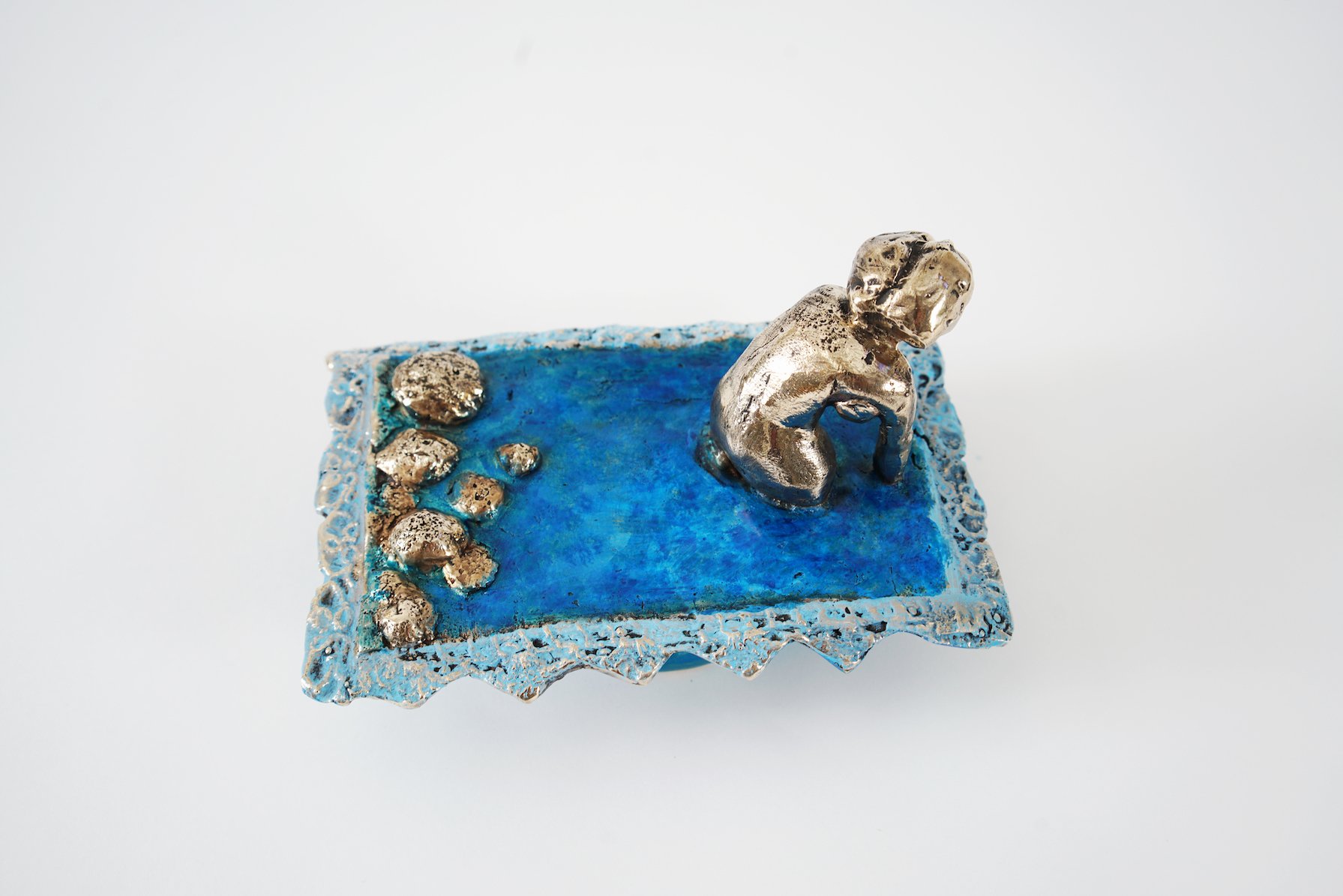
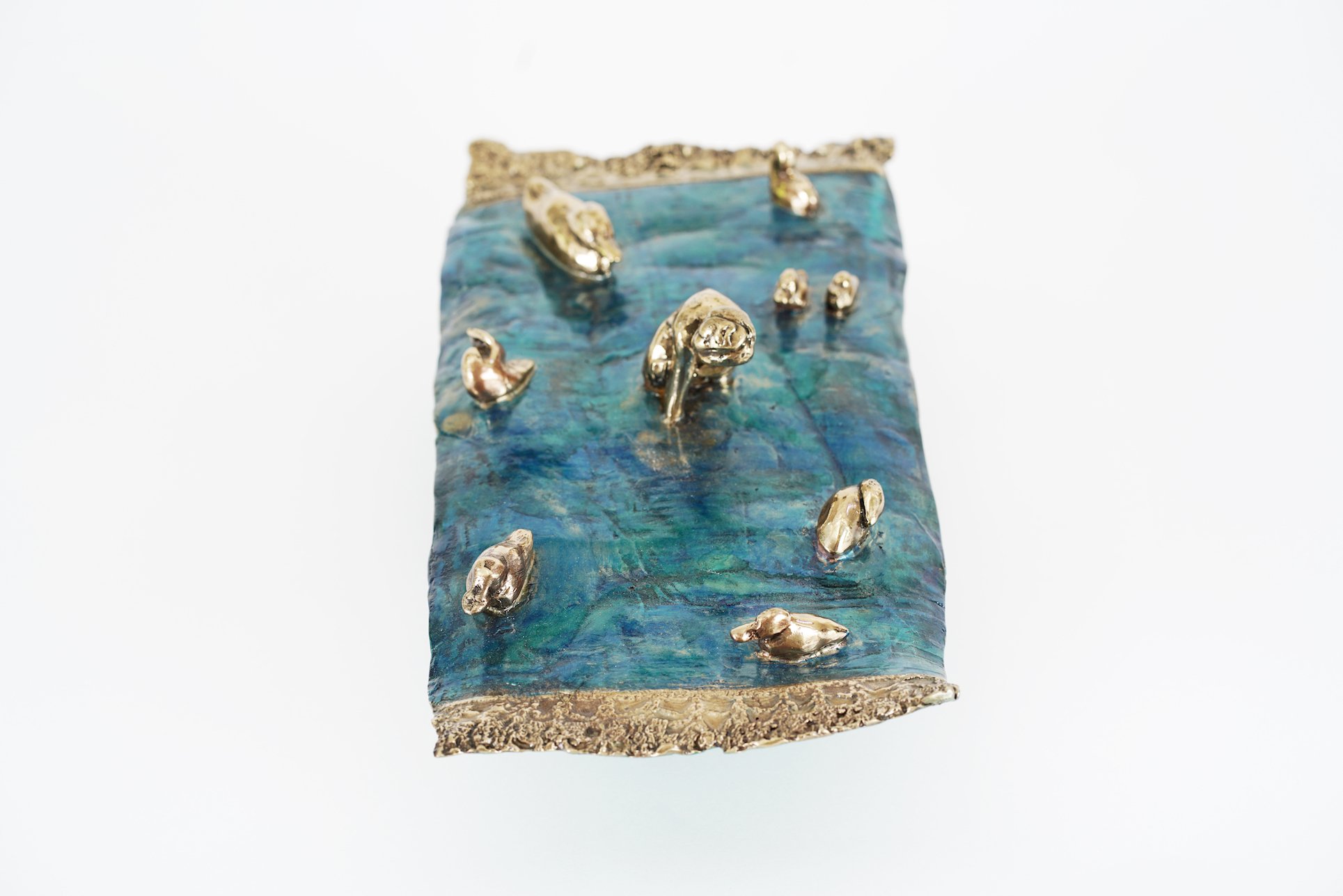
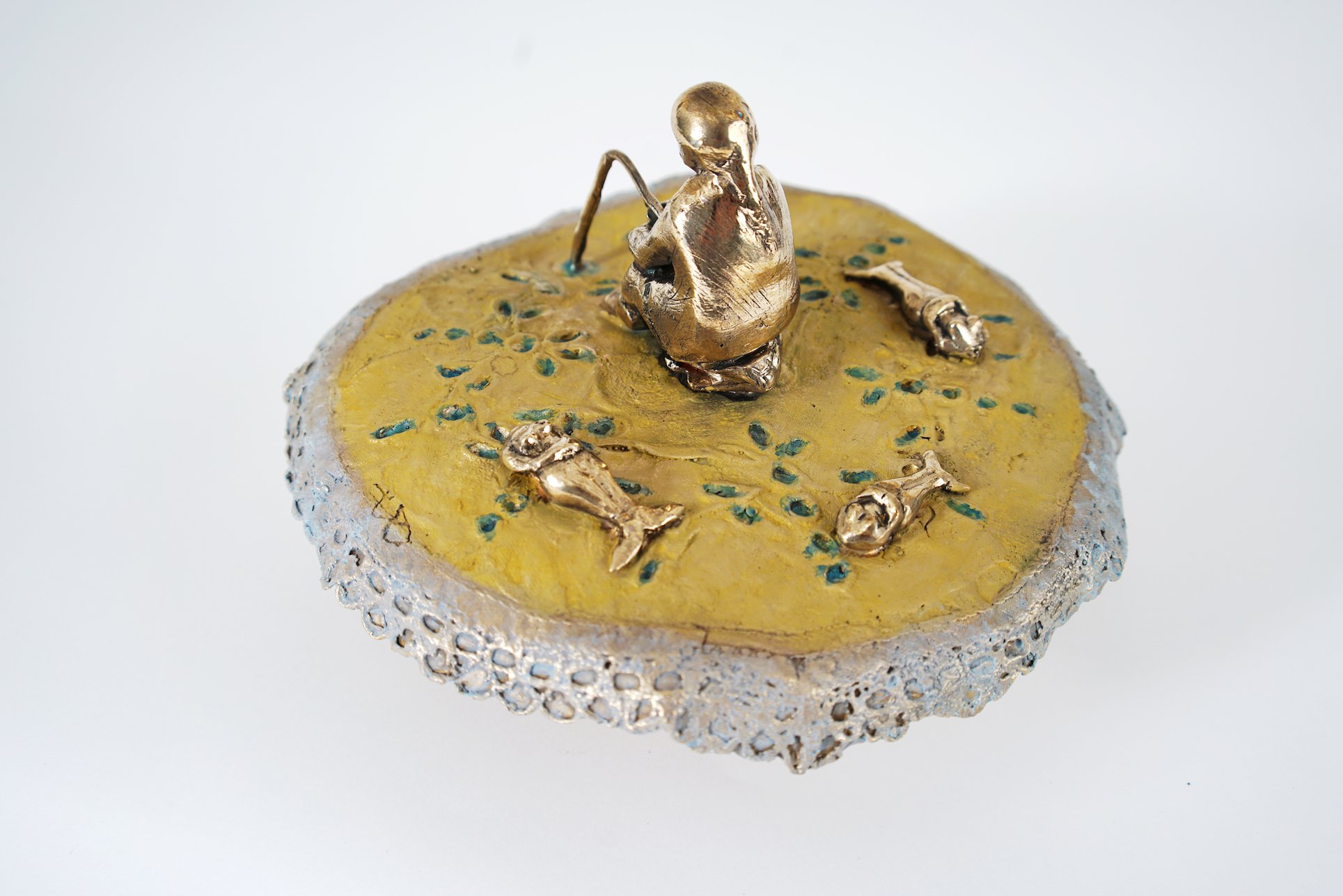
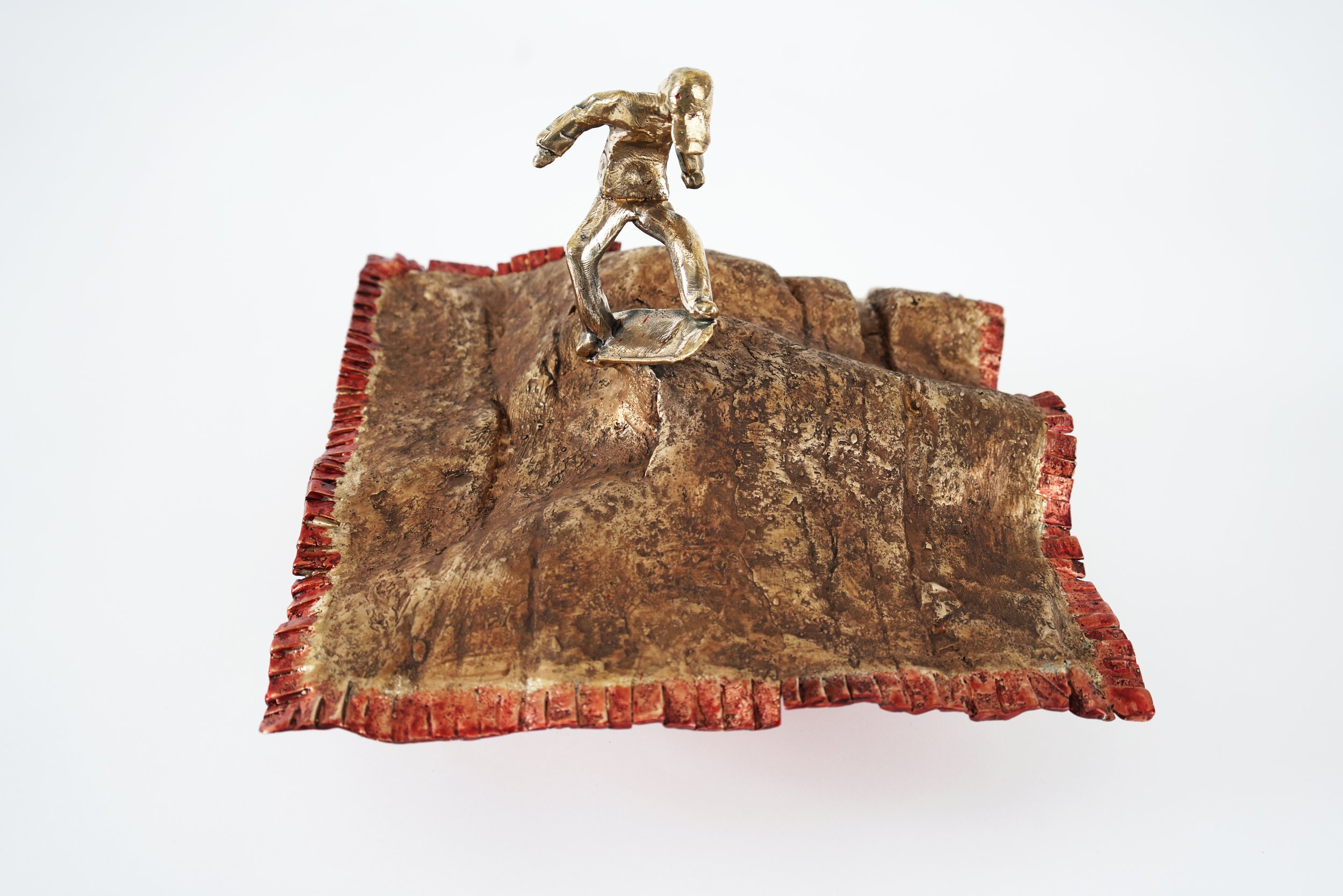
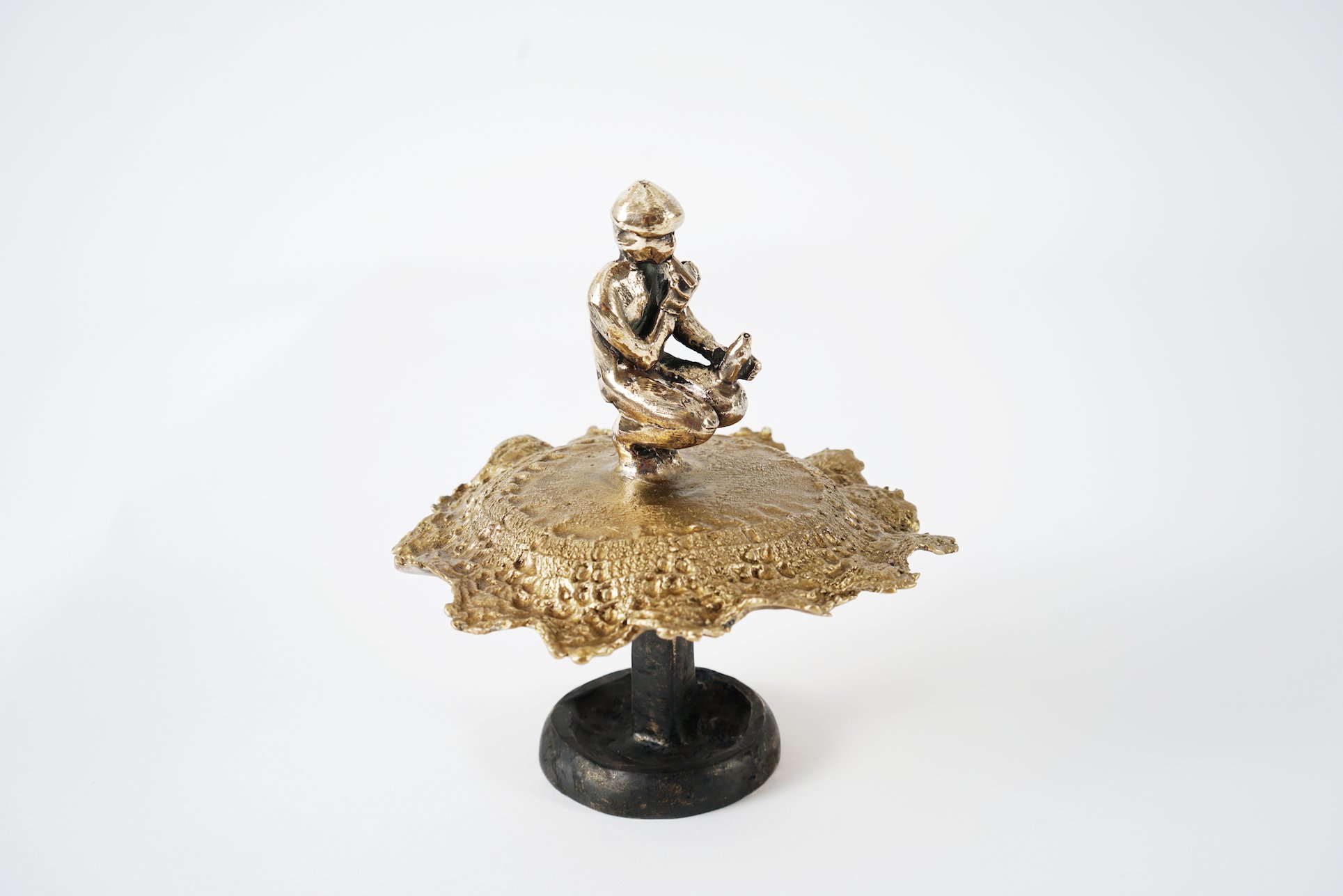

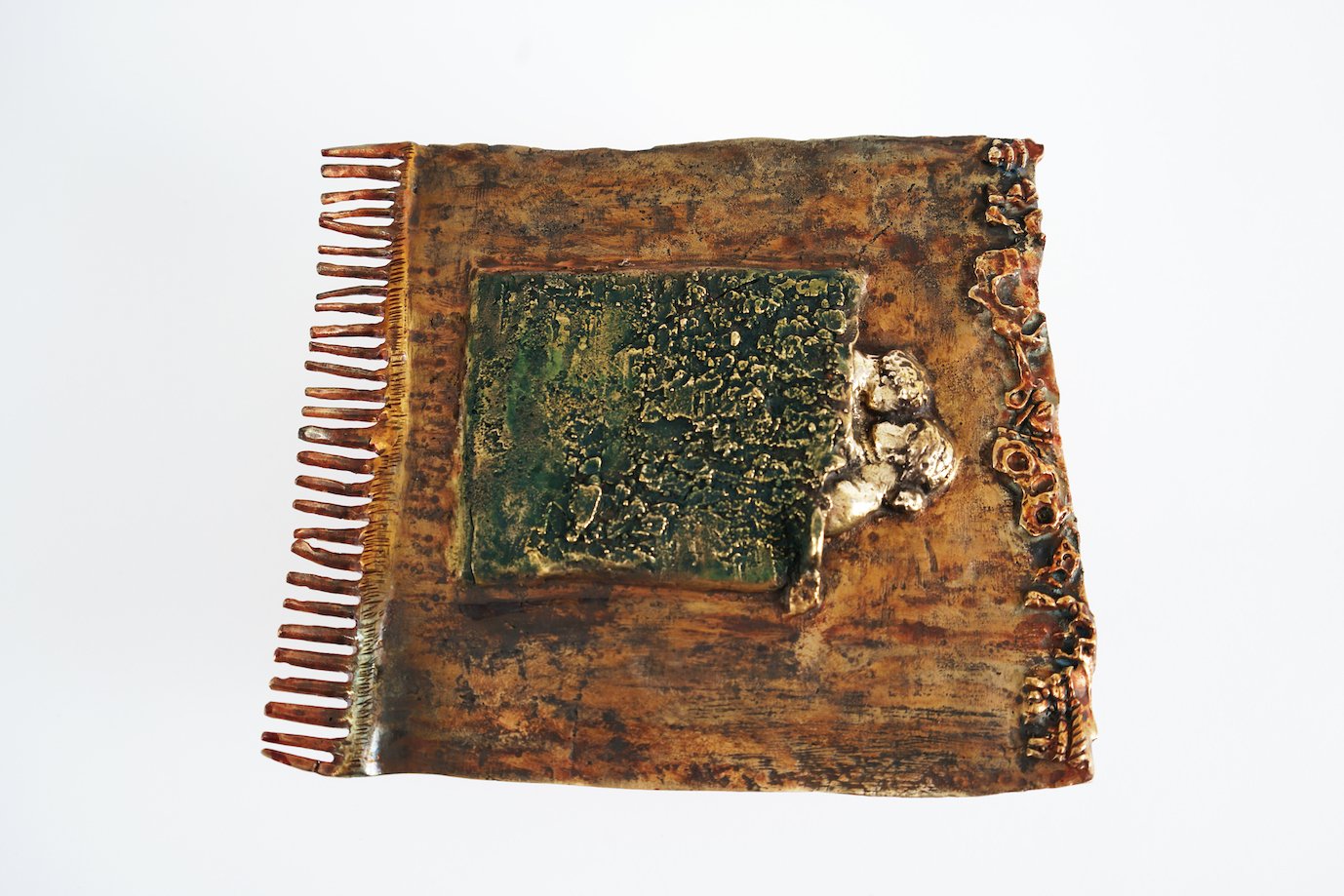
Jeff Bliumis melds and welds his latest mobile sculpture series himself, in his metalworking studio. His involvement in each step of the process, from melting the aluminum and bronze to inciting the chemical reaction that creates these lively colored patinas, produces a unique and textured result in each work. Flying Carpets are meant to be played with; they can rest on flexible stands that he invites viewers to touch and move around. The interactive statues evoke the escapist qualities of magic carpets, as motifs in traditional art, literature, and music. As sites of imagination and possibility, magic carpets offer their riders openings into the alternate and the surreal. Strange things can happen there.
In modern psychology, in the words of Carl Jung, “dreams are the most common and most normal expression of the unconscious psyche”; thus, as a dream archetype, the common phenomenon of somnambulant flight—on a carpet or no—is said to signify a person’s inner desire for freedom, in contrast to the quotidian mundane. This desire is expressed, too, in folklore. On the six hundred and forty-fifth night of Scheherazade’s Thousand and One, she recounts a dealer at Bishanargh who explains the high price of his wares to the Prince Husayn, “Whoever sitteth on this carpet and willeth in thought to be taken up and set down upon other site will, in the twinkling of an eye, be borne thither, be that place nearhand or distant many a day’s journey and difficult to reach” (The Book of the Thousand Nights and a Night, Vol. 13, trans. Sir Richard Frances Burton, 1887). The motif appears also in a fable, recounted in a Qur’anic and Talmudic fable in which King Solomon flies on a sixty-mile carpet of green silk and golden weft, and the wind comes to bend to his command (Theresa Bane, Encyclopedia of Mythical Objects, p. 68). In fantasy literatures and fairy tales from around the world, variations on the theme of the Flying Carpet abound.
More than expression of this pattern of human yearning for supernatural escape, Bliumis’s Flying Carpets hint at the very real contemporary political crisis of migration. According to the UN International Organization for Migration’s 2022 World Migration Report, 281 million people live in countries other than their place of birth, as of 2020. Around the world, people flee military conflict, state violence, economic devastation, and environmental catastrophe for the promise of a better life elsewhere. What greets these people when they arrive at their destination—if they make it there—depends.
The series of sculptures seeks to capture the human and mythic valence of the flying carpet motif by combining fantastical and realistic imagery of intimate life. Bliumis is attuned to scenes of human community and partnership: people break bread in the nude on a quilted carpet in “Naked Lunch”; a couple shares weight on a pillow-like surface in “Cloud Nine”; a family gather around a bonfire in “Watching Time Flies”; in “Daylilies,” a couple twist and embrace on an intricate terra-cotta surface, surrounded by birds; and in “Mother’s Dream,” a woman and her child sleep under a shared green and earth-like quilt.
In some sculptures, the carpet doubles as a body of water, nodding dually to trans-oceanic migration and the folkloric theme of flight over rivers and seas: Color and shape transform the carpet into a tide pool, into which a crouching human wades in “Dip”; a woman fishes in a yellow pond, redolent of embroidery, in “Mermaid Spot Doily”; and larger-than-life aquatic birds accompany a crouching human in “Ducky Bath.”
Still others gesture at the Flying Carpet’s spiritual heritage. “Transporter” portrays a person in a tantric pose on a detailed rug, beside a model globe. “Seven Miles High” portrays a contemplative posture, while “Buddha Class” portrays a series of people of various shapes and sizes in the act of meditation. But Bliumis leaves room for the unconventional and weird: there’s a skateboarder in “Rock to Fakie,” bites taken out of objects to indicate unruly hunger, and even a concert for mushrooms, alluding to the musical trances induced by the magic kind.
This series invites the viewer to contemplate their own escapist visions. If you had a magic carpet, where would you go?